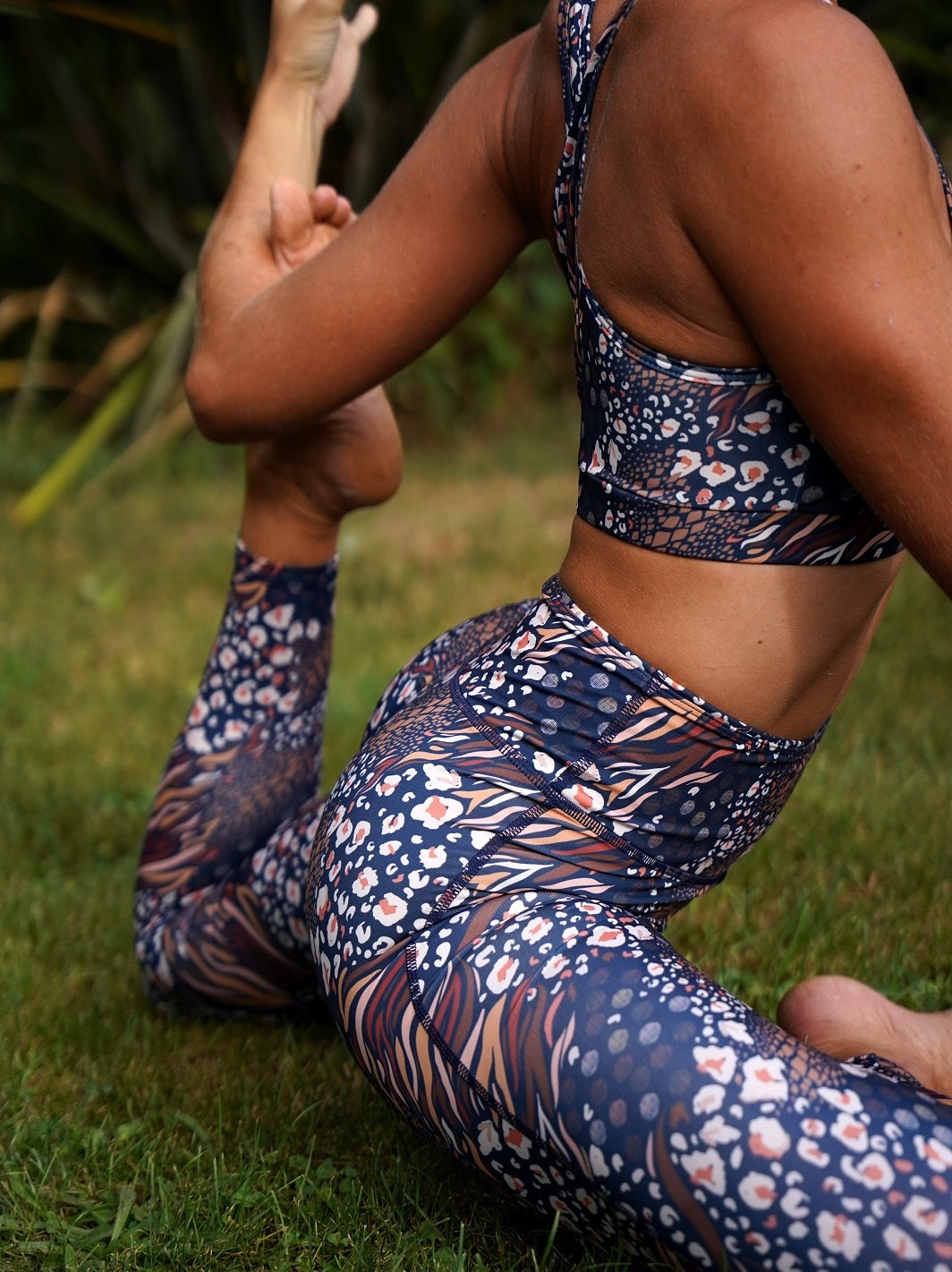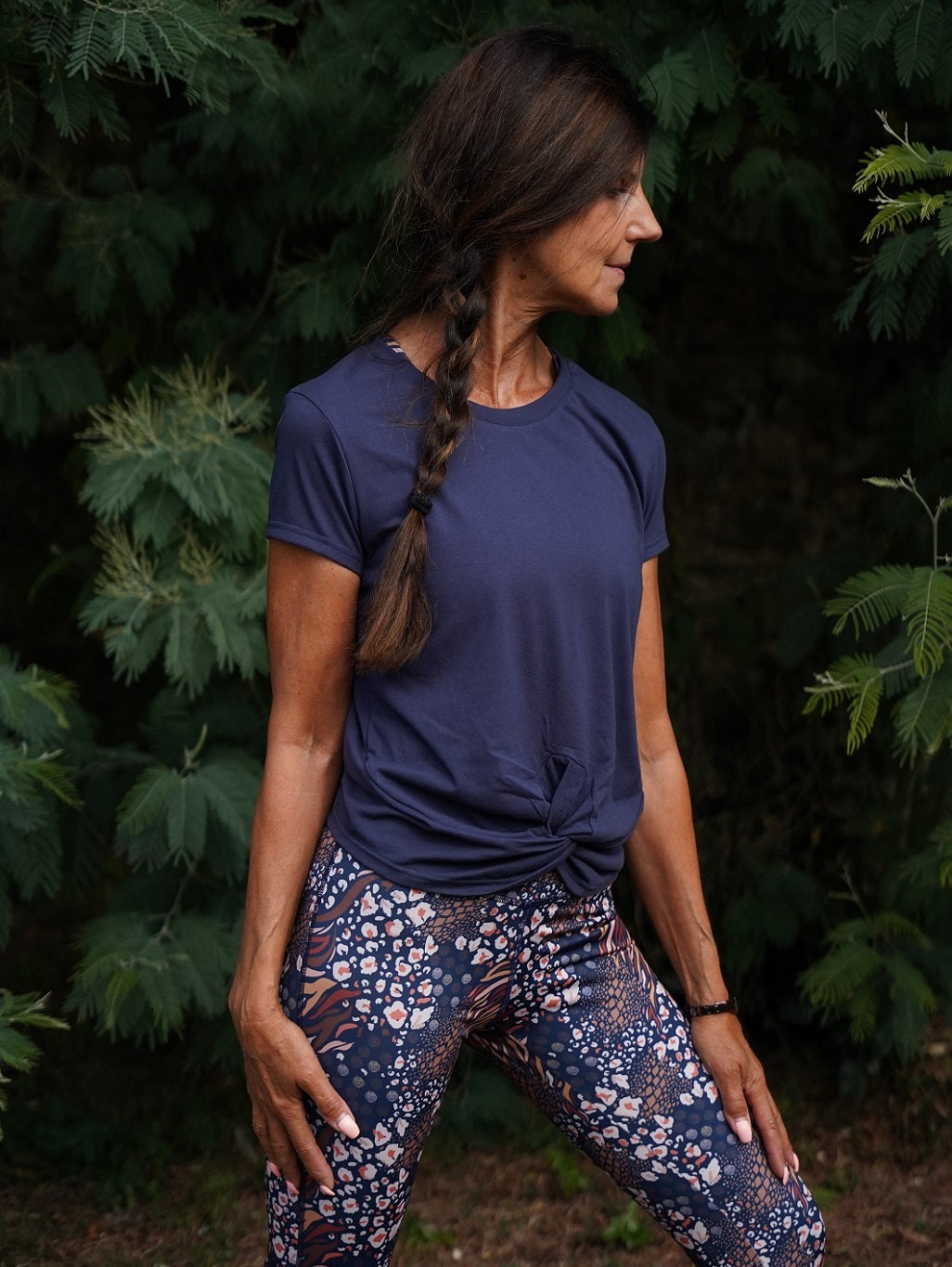That only happens to other people !
And yes, even if yoga may seem very gentle at first glance (some even say: it's not a sport!), it happens that we get injured.
Nothing dramatic, eh, we're a long way from shredded ears in rugby or torn cruciate ligaments following a fall while skiing.
But still...
Some precautions are required to practice safely and avoid inconvenience.
For my part, I have already suffered small injuries which ended up going away on their own but at the time, it was quite unpleasant: bruised shoulder, stiff Achilles tendon, sprained thumb...
Some of you may have already experienced pain in your wrists, which happens when you put too much weight on your arms in the rooster, peacock, swan or crow postures for example.
Still others may have hurt their knees (also called patellar syndrome), following poor placement in postures or strenuous training.
In short, all of this is 100% avoidable if we take these few precautions.
 1. Choose your yoga teacher wisely
1. Choose your yoga teacher wisely
When looking for your future yoga teacher, preferably choose someone with a lot of experience and a good listener.
During the first session, listen to your intuition: do you like the atmosphere? Do you feel listened to, supported, encouraged, at ease?
And the main point: does the teacher know how to adapt to your particular needs even if the course is in a group?
A good yoga teacher is a person who has undergone serious training, who listens and who offers several variations of a posture for the different “levels” of the students and their possible injuries or weaknesses.
 2. Take your time
2. Take your time
Don't try to do headstand pose in your first yoga class :-)
An Italian proverb that I really like “da tempo al tempo”: give time time!
The very first yoga classes or those following a long break can be painful because the body is stiff and perhaps also sometimes blocked.
Some postures are uncomfortable, others easier.
Take your time, listen to your body.
Session after session, your body will loosen up, learn, unwind.
The postures will gradually become more familiar, or even more “delicious”.
You will then see the magic happen.
If you want to motivate yourself to do yoga every day, follow our tips here.
 3. We warm up
3. We warm up
Just as with other sports, a little warm-up is necessary before starting a yoga session.
Very often, it is the yoga teacher who initiates this mini warm-up which is nothing other than the start of the yoga class.
This is why the first postures of a session are gentle and prepare for what follows: a series of cat/cow, stretching postures for the hips, wrists and arms.
Enjoy before the rest of the menu!
 4. Don't compare yourself
4. Don't compare yourself
What distinguishes yoga from other disciplines or sports is the absence of competition.
The goal is even the opposite: we do not inflict violence on each other at any cost.
This is why it is counterproductive to compare yourself.
You practice yoga for yourself, your well-being and your personal development.
You are on the mat to discover yourself and no one else.
Your neighbors on the mats may be more flexible, more trained, more enduring, etc.
Try substituting healthy motivation for jealousy.
Without pushing yourself to your limits, which could cause injury.
Who knows, maybe in a few years, you will also be more flexible, more energetic, more enduring?
See other yoginis as a source of inspiration, proof that anything is possible!
That only happens to other people !
And yes, even if yoga may seem very gentle at first glance (some even say: it's not a sport!), it happens that we get injured.
Nothing dramatic, eh, we're a long way from shredded ears in rugby or torn cruciate ligaments following a fall while skiing.
But still…
Some precautions are required to practice safely and avoid inconvenience.
For my part, I have already suffered small injuries which ended up going away on their own but at the time, it was quite unpleasant: bruised shoulder, stiff Achilles tendon, sprained thumb...
Some of you may have already experienced pain in your wrists, which happens when you put too much weight on your arms in the rooster, peacock, swan or crow postures for example.
Still others may have hurt their knees (also called patellar syndrome), following poor placement in postures or strenuous training.
In short, all of this is 100% avoidable if we take these few precautions.
 5. Avoid certain postures when you are a beginner
5. Avoid certain postures when you are a beginner
Not all yoga poses are equal.
Some are accessible to everyone: the corpse, the cat/cow series, the child, the mountain, etc.
Others are intermediate and require a little practice.
As for the others, it almost seems as if they are reserved for Olympic medal-winning gymnasts.
To avoid injury, take it easy.
Maybe one day you'll be able to do headstand pose.
In the meantime, get help for really difficult postures like inversions, neck and head support postures, or contortions.
For the latter, the risk of injury is real!
For each asana, make sure you are stable and relatively comfortable.
 6. Respect the alignments carefully
6. Respect the alignments carefully
The benefit of taking face-to-face classes and having a teacher who can correct us for possible misalignment.
When a yoga posture is performed incorrectly, we can injure ourselves in the moment, but also by constantly repeating the wrong movements.
A good yoga teacher takes the time to explain to beginners the correct positioning of the body for each posture and corrects it as needed.
As a yogi apprentice, we sometimes lack an accurate perception of our body (propriosception).
This awareness of placement will come from practicing yoga.
If you are practicing at home, you can stand in front of a mirror to help you.
 7. Hold the posture for less time
7. Hold the posture for less time
When you're starting out, you're not necessarily going to limit yourself to "easy" postures.
What interest ?
We will be faced with more challenging postures, which will become easier over time.
Some can be very uncomfortable.
Agree to stay in this type of posture for a shorter time than others.
Little by little, your body will learn and become more flexible and you will be able to stay longer in the postures.
In the meantime, listen to your body and come out of the posture when it is painful.
Suffering is not yogi.
 8. Listen to your body
8. Listen to your body
This is one of the main components of yoga: listening to yourself and discovering yourself.
Whether you are stiff or conversely hyper-lax, learn to enter a posture slowly, consciously.
Become aware of the limits that must be set for the body.
 9.Use suitable accessories
9.Use suitable accessories
One of the popular yogas these days is called Iyengar Yoga.
It is practiced with accessories to facilitate postures for people with disabilities, weaknesses or injuries.
To help you in difficult postures and avoid any injury, don't hesitate to grab your favorite accessories: yoga block, strap, bolster, yoga wheel, etc.
 10. Choose a good carpet
10. Choose a good carpet
The mat is the essential equipment of any yogi of the 21st century.
The yogis of ancient times still made their work extremely complicated by practicing on clay at 40°C.
Fortunately for us, there is a plethora of yoga mats on offer, it's up to you to choose one adapted to the yoga you have chosen to practice, to your level (often the thickness of the mat decreases with the years of practice), to your perspiration (microfiber can be very slippery for yogis who have dry hands and feet).
A suitable mat will be the basis of a successful and injury-free yoga session.
Practicing yoga, what an adventure!
We invite you to find the type of yoga suited to your practice in this post, and a non-exhaustive list of its benefits here.
And to motivate yourself to practice yoga every day, follow us here!
If you are pregnant, take even more care of yourself and pay attention to certain yoga postures that are completely contraindicated during pregnancy.
Discover here our eco-responsible yoga outfits made in France from recycled materials, perfectly suited to practicing all types of yoga!
And so as not to miss any news from Géopélie, Subscribe to our newsletter here at the bottom of the page 👇





Leave a comment